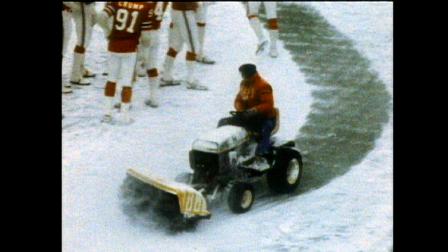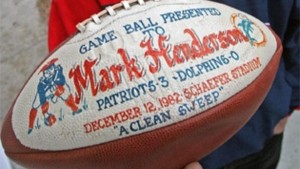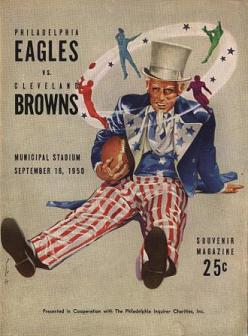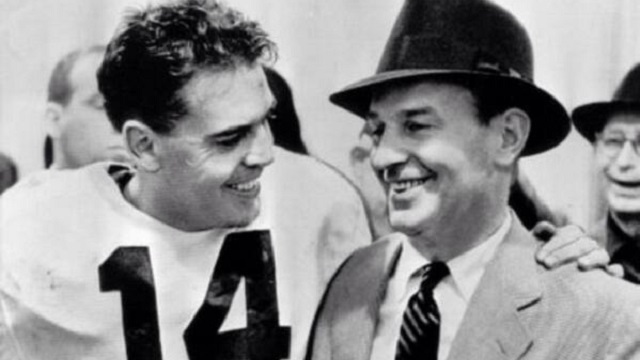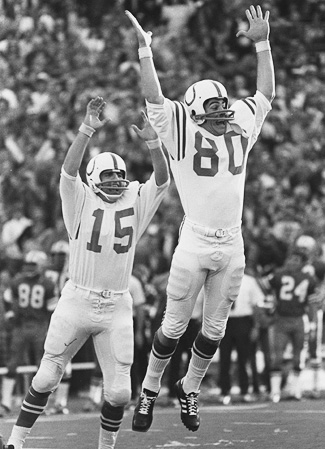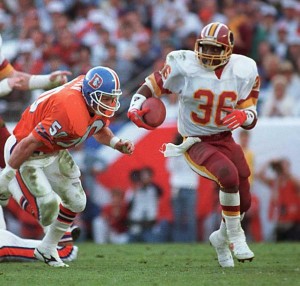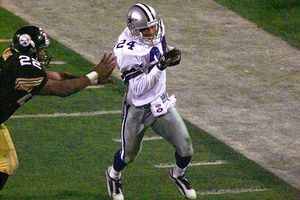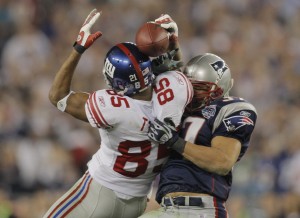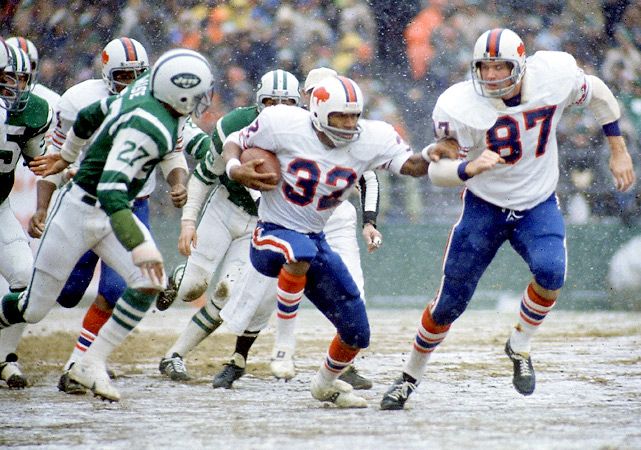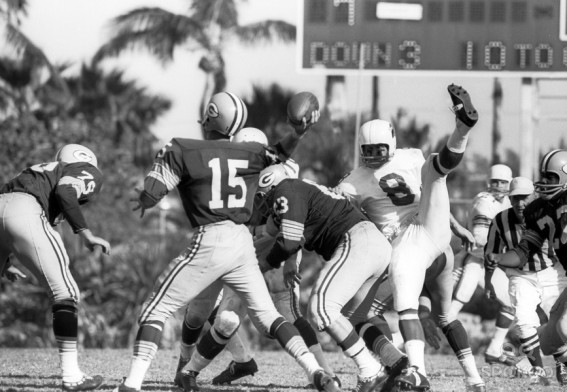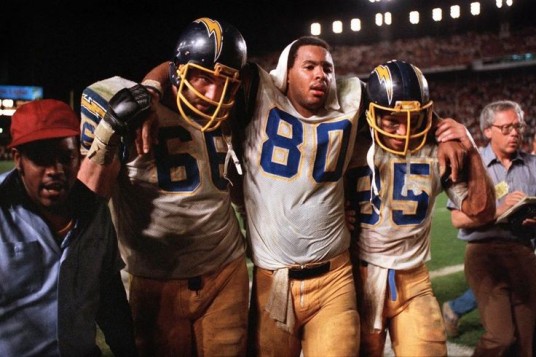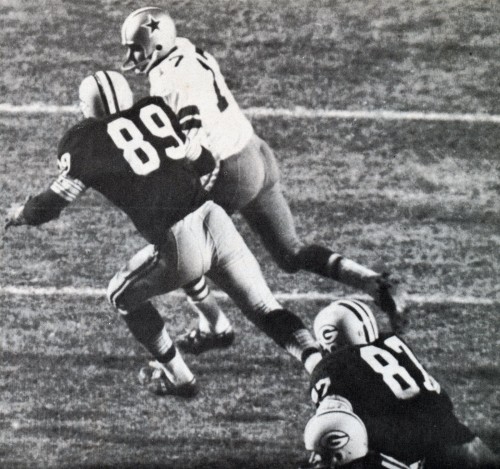This week’s NFL schedule pairs the Detroit Lions and Philadelphia Eagles against each other, which takes this week’s Throwback Thursday feature back to Thanksgiving Day of 1968, to a dull, sloshing game between these 2 teams that became known as the “Thanksgiving Mud Bowl”. You rarely see games like this played nowadays with the advent of artificial playing fields and domed stadiums, but even as boring as it was, it was REAL football played in REAL conditions. In an era known for a style of play that was labeled “three yards and a cloud of dust”, this contest was more like “three yards and a cloud of slop”. There was very little offense displayed by either team, as the field conditions at Tiger Stadium were a quagmire due to 36 consecutive hours of rain in the Detroit area. Lions’ linebacker Wayne Walker described the muddy field as being “ankle deep”, while a Philadelphia Inquirer sportswriter wrote that “Tiger Stadium’s turf made the average pig’s quarters appear to be wall-to-wall carpeted by comparison.”
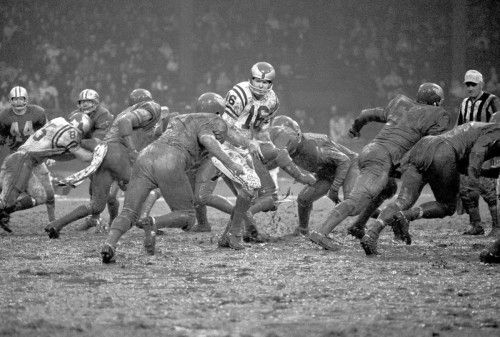
Eagle QB Norm Snead prepares to hand off in the 1968 Thanksgiving Day “Mud Bowl”
The Eagles wound up winning the contest 12-0 on 4 field goals by placekicker Sam Baker. Although there was very little action in the game, there was plenty of controversy afterwards, due to a situation eerily similar to the recent New England Patriots’ “Deflategate” episode. In the 1960s, the NFL had a rule that only the home team was to provide footballs for game action, with the officials not having any control over the use of the balls like they do in today’s game. But on each of their field goal attempts, the Eagles’ equipment manager snuck dry balls in to the holder, Joe Scarpati, giving Baker a decided edge over the Lions, who used the wet, muddy balls on their possessions. Karma caught up with the Philadelphia club, however. They had a terrible season, but the Thanksgiving win turned out to be just enough to cost them the top draft pick in the next NFL draft. Buffalo got the pick instead and the Bills were able to choose O.J. Simpson. The Eagles wound up picking the forgettable Leroy Keyes.
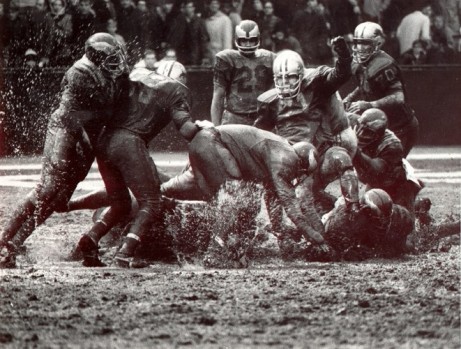
More action from 1968’s “Thanksgiving Mud Bowl”
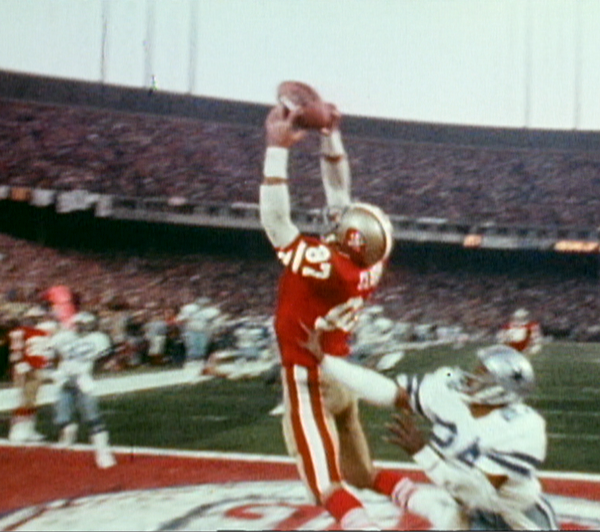
 Giant quarterback Y.A. Tittle
Giant quarterback Y.A. Tittle